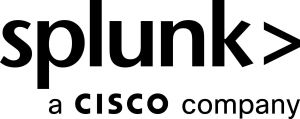Use Cases for Observability with the Splunk Platform
As teams modernize, there are a lot more things they have to monitor and react to - hybrid environments, more frequent software changes, more telemetry data emitted across fragmented tools, and more alerts. Troubleshooting these software systems has never been harder, and the way monitoring has traditionally been done isn't effective anymore.
Observability can be viewed as a modern approach to monitoring that provides complete visibility across the full stack of infrastructure, applications, and the digital customer experience. Observability provides the insights needed to ensure the continuous health, reliability and performance of the business and the applications and infrastructure that it runs on.
Splunk Observability Cloud provides a seamless and streamlined workflow that can be used during the whole observability life cycle for monitoring, troubleshooting, investigation and resolution. But many customers also use the Splunk platform for observability needs, since the Splunk platform serves as the exclusive log ingestion mechanism for Splunk Observability Cloud while also adeptly managing metrics. However, it's worth noting that the Splunk platform lacks the capacity to handle traces, a pivotal component of Splunk Observability Cloud.
The Splunk platform enables customers to tackle data sprawl driven by digital transformation initiatives and is uniquely suited to meeting comprehensive visibility needs at scale. This provides business resilience, innovation, and enterprise grade scalability that helps modern enterprises thrive. In today’s complex landscape, data is created and analyzed across multiple silos, creating challenges around data access and security. The Splunk platform can help normalize data across sources, but more importantly, it can enable stakeholders to add context to data as it relates to business value. All of this is provided in a hybrid environment and using machine learning to move beyond the feasibility of human scale.
This guide shows you how you can build a foundational observability program using only the Splunk platform and Splunkbase apps, but if you want to learn how to use Splunk Observability Cloud for a single, consistent user experience across all metric, trace and log data, check the Use Case Explorer for Observability.

